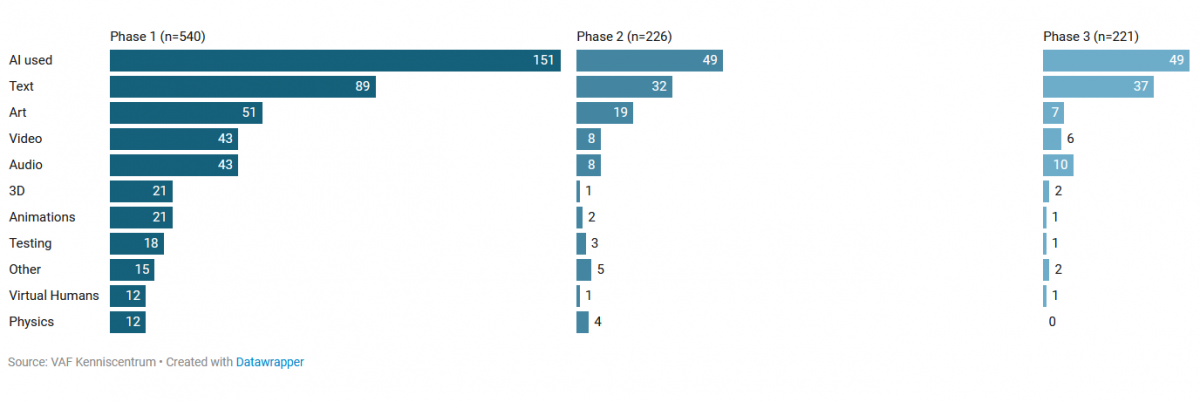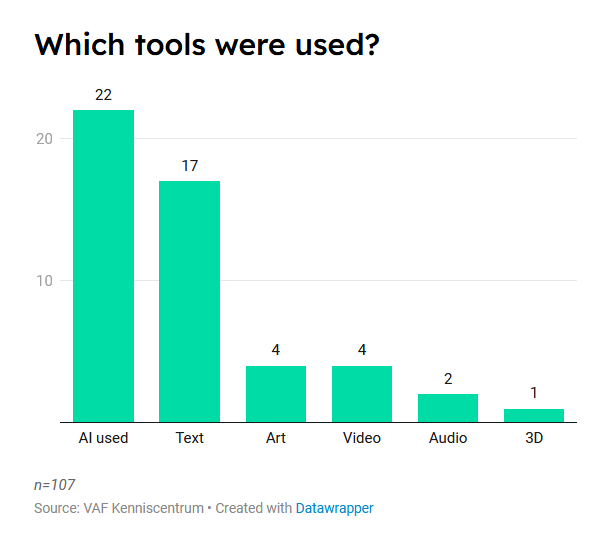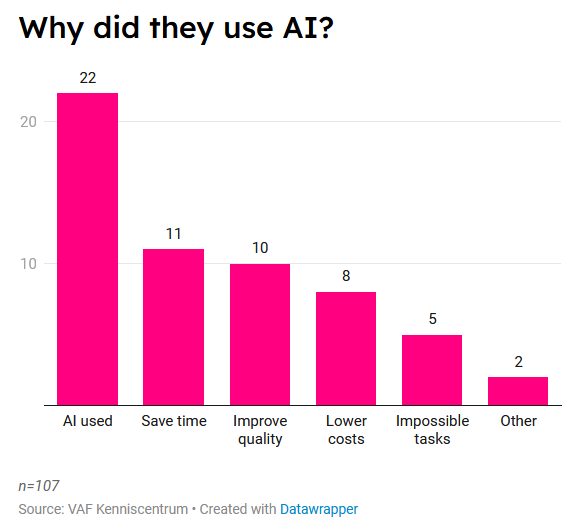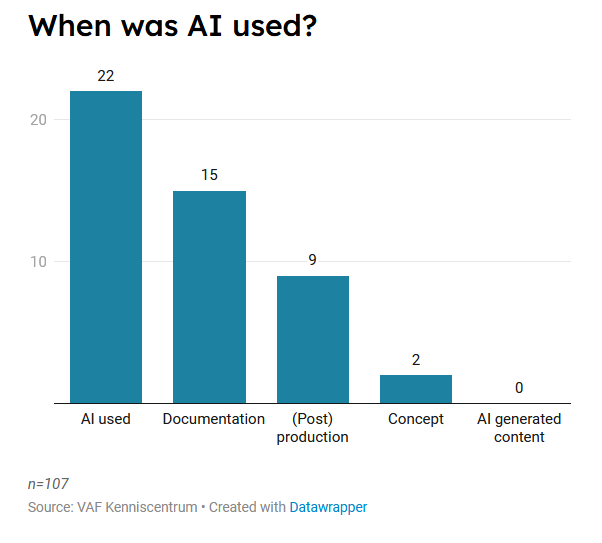Artificial intelligence is mainly used in the film industry to assist with administrative and technical tasks, rather than in video and audio production. However, there are reservations about the use of AI in terms of copyright and fears that it will replace the human factor or be used for unethical purposes.
A report by the Flemish Audiovisual Fund (VAF) on the use of AI in the audiovisual and games sector will fuel the debate as members of the European Film Agencies (EFAD) discuss the pressing challenges facing the European film industry on the sidelines of the Berlinale. Key topics in the dialogue between EFAD members include the impact of AI on filmmaking, sustainability in production, the German film funding reform and the implementation of financial obligations under the Audiovisual Media Services Directive.
Since 1 October 2023, the VAF has been collecting data by including questionnaires on the use of AI in all applications for support for the creation of audiovisual projects. In July 2024, the researchers began to analyse the results and the data provided. The study was carried out under the coordination of Matthew Deboysere, Head of Research at the VAF, in collaboration with Howest DAE Research, in addition to legal experts on intellectual property.
Some of the general conclusions of the report are that:
- The use of artificial intelligence is relatively low over the period studied.
- Artificial intelligence is mainly used to support administrative and technical tasks. This mainly involves the use of text tools such as ChatGPT.
- Hardly anyone used AI in the end product, but there's no concrete definition of what it means to use AI in the end product. This leaves it open to interpretation.
- There is a clear lack of knowledge about artificial intelligence and what it should and shouldn't be used for.
- There's a clear lack of knowledge about intellectual property, privacy and copyright laws.
The results show a clear trend, but the researchers say more data is needed to measure actual usage and a qualitative study is essential.
The questions were addressed to creators of projects in all categories (fiction, animation, documentary, FilmLab, games and podcasts) that were in the first stage of applying for funding, to projects that were in the second stage and whose application was in the first payment phase, and to projects that were in the third stage and in the last payment phase.
The reported use of artificial intelligence by July 2024 is quite limited. 22.2% of respondents in Stage 3 said that AI had been used in the project, while 28% of respondents in Stage 1 questionnaires said that they planned to use AI. The largest category of AI tools used, by a significant margin across all phases, was text generation, such as ChatGPT. This was around 16-17% of respondents in both stages. Tools for pictures and images: Generative Art was the second most used in Stages 1 & 2.

From the responses of authors whose projects were in the third stage, 15.9% of respondents, or 77.2% of all AI users, used text tools such as ChatGPT. 50% of respondents used AI to save time, 45% said that AI improved the quality of their project and 36% of respondents used AI to reduce costs. Finally, 23% of respondents said that AI was used to achieve something that would not have been possible without AI, either because it was not physically possible or because of the time it would take to achieve the same result without AI.

The majority (68%) used AI tools primarily to write texts. 40% also used AI in the production or post-production phase of a project. A minority (9%) used AI at the concept stage. The concept stages of these projects predate the rise in popularity of AI, and the researchers expect this number to increase in the coming years. When asked if there was any AI-generated content in the final product, none of the respondents said yes.

81% of respondents who used AI in their project said they used free tools. The vast majority of respondents (81%) also said that they didn't know whether the AI tool they utilised made use of intellectual property right. The remainder replied that no IP was used.

The researchers asked which reasons justify the use of artificial intelligence and the answers were . summarised in 5 broad categories:
- Administration and support. Automatisation can drastically improve efficienty.
- Prototyping & pitches. As long as the users remain at the creative helm.
- Translation & Transcriptions. When speed is essential.
- Inspiration and Research. Researching the appropriate style and direction.
- Never. 15% of respondents didn't see any advantage of using AI for their projects.
Similarly, the researchers asked about the reasons why AI should never be used. The asnwers were separated into 3 large categories:
- Concerns about IP and Privacy. Fear of AI being used to infringe on IP rights, and that personal characteristics like voices and images could be copied.
- Replacing people with AI. Fear of AI being used to replace writers, artists and designers.
- Ethical reasons. Many see a doomsday scenario where AI is used for unethical purposes, e.g. manipulation, misdirection or malicious intent.
You can read the report here.
--
Photo: Generated by AI
Photo source












